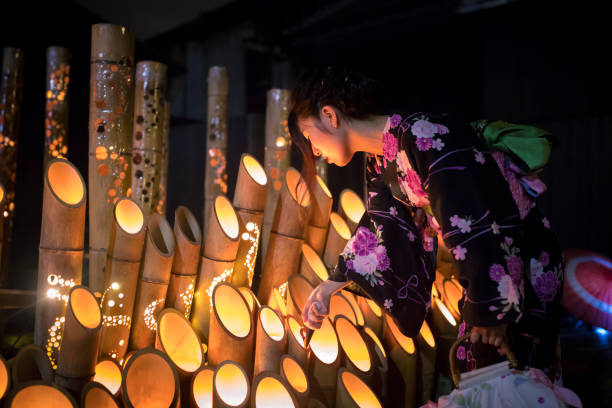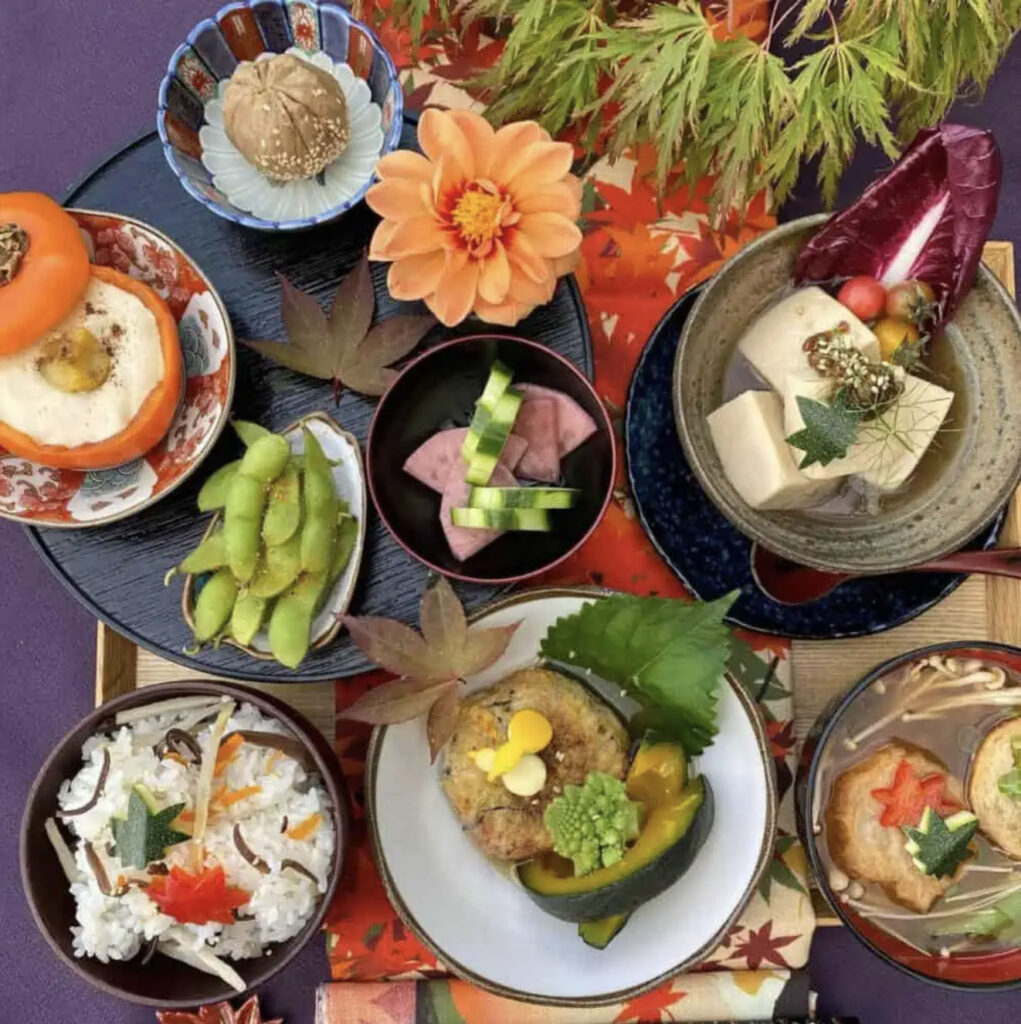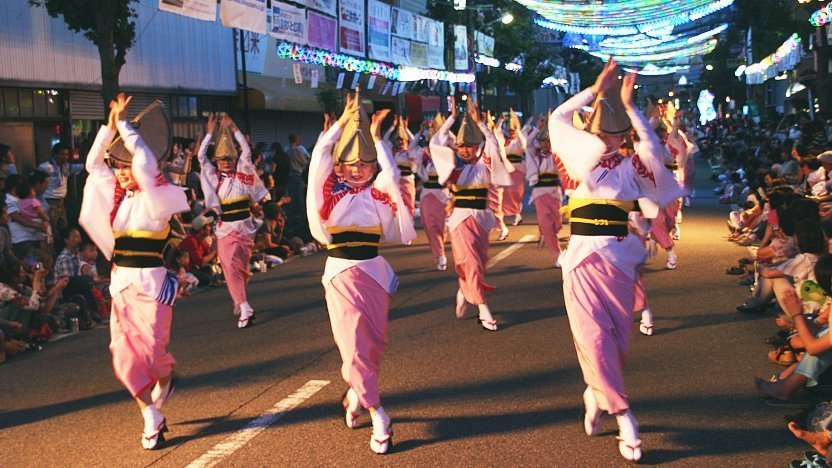Both China and Japan have a rich culture related to honoring their ancestors. While China holds the Qingming Holiday in Spring, Japan commemorates the Bon Festival in the Fall. It is one of the three most significant festivals in Japanese culture (alongside New Year and Golden Week), which has been celebrated for more than 500 years. There are many interesting facts and myths about Bon Festival in Japan. Let’s dive in!

Table of Contents
What Is The History Of The Bon Festival in Japan?
Bon festival in Japan, or Obon festival, is related to Buddhist myths. It originated in the story of a disciple of the Buddha named Maha Maudgalayana and his journey to look for the spirit of his mother. With the assistance of Buddle, he can free his mother from suffering in exchange for making offerings to Buddhist monks on the 15th day of the 7th month. After successfully freeing his mother, he danced with joy, which is believed to be the starting point of the Obon festival.
Then, the Obon festival became an important occasion for the Japanese to honor their ancestors. During the festival, the deceased spirits of ancestors and loved ones come back to visit the living. Along with the changes in era and society, this event has evolved into a family gathering and preparing offerings to pay respect to the dead together. Japanese from across Japan and all over the world will return to their hometown. It is also blended with other festive activities such as carnivals, traditional dress-wearing, games, and festival foods.

How Does The Bon Festival in Japan Celebrate?
As the Bon Festival in Japan often falls around July 15 of the lunar calendar, in the 2024 calendar, it will be celebrated for four days from August 13 to 16. However, some specific areas in Japan might recognize the day differently, such as the Okinawa Obon holiday, which will fall from August 28 to 30 in 2024.
During the Bon Festival in Japan, there are six main traditions and activities across the country to follow.
1. Welcoming fire (迎え火/迎え火)
The first day of the Bon festival in Japan is often the busiest time when people have to prepare lanterns, light them up, and hang them outside their homes, on the trees, and on the walls to help the spirits find their way back to their homes. Some families will have fires at the family grave, burning natural fuels such as wood or husks to feed the fire. Some temples also hold a fire ceremony to greet all of the souls of the people who have lived in the eras such as Shiraishi Island.

2. Offerings of food, drinks, sweets (お膳/ozen)
It is a must-do tradition in the Bon festival. Ozen foods shared with the dead can be small and simple or larger meals based on different family preferences. Some typical offerings are fruit, rice, green tea, sake, and sweets. People especially prefer to offer special handmade sweets shaped in lotus leaves at the family’s Buddhist altar.

3. Making Spirit Horses (精霊馬/Shoryo Uma)
Another special tradition during Obon is making Spirit Horses. These beautiful horse sculptures are carefully crafted from cucumbers and adorned with paper harnesses to honor ancestors. The sculptures symbolize the spirits’ journey between different worlds and act as a reminder of the essence of maintaining customs alive through dedicated artistry and care.

4. Visiting and cleaning graves ( 御墓参り/ohakamairi)
Like the Qingming festival, people in Japan take advantage of the Obon festival to spend a day visiting the tomb of ancestors and do cleaning. It is an easy task as all graveyards in Japan offer free water taps to assist people in brushing away dirt and stains and rinsing the stone with a special pail of water and ladle.

You May Also Like:
- 7+ Lunar New Year Food Traditions Around Asia
- Is Japan’s Golden Week Worth Visiting?
5. Bon Odori dance (盆踊り/bonodori)
Bon Odori dance is one of the most famous folk dances of Japanese culture. The dancers perform synchronized steps while moving in a large circle around the performance stage known as yagura. Other styles of dance exist, such as the Awa Odori, which is performed by small groups of dancers who move around the city streets in their own smaller circles. Traditionally, these dances were performed from the evening until the early morning hours.

6. Seeing off the spirits: 送り火/灯籠流し/okuribi/toronagashi
One of the most breathtaking scenes during the Bon festival in Japan is the floating lanterns in the seas, lakes, or rivers. It is a tradition to release the floating lanterns into the rivers as a metaphor for seeing off ancestors’ spirits to return to where they came from. Each paper lantern is designed with one candle lit inside, each candle representing the soul of the ancestors.

Bottom Lines
There is nothing that can disagree about the beauty and meaning of the Bon festival in Japan. If you are a foreigner, visiting Japan during this holiday can be a great experience.
💡Besides the Bon festival, Japan still has a variety of unique and festive holidays to explore. If you’re looking for a great way to host virtual festival quizzes for celebrations, parties, meetings, and more, check out AhaSlide right away!
More tips and advice about events? Pick an event that you’re concerned with, and we’ll give you a helping hand!
FAQs
What is the Japanese Bon Festival?
Japanese Bon festival, or Obon festival, is one of the major annual holidays in Japan, where people commemorate their deceased ancestors by visiting graves and offering sacrifices. It also comes with folk dances and performances.
Is Obon a national holiday in Japan?
No, Obon hasn’t been announced as a public holiday in Japan. However, many people take a few days off to return to their hometown to celebrate.
What is the bon dance in Tokyo?
The Bon festival is the root of Bon Odori, the iconic dance performance in public spaces all over Japan to welcome back their ancestor’s spirits. The dance is famous for lively and rhythmic movements, typically accompanied by traditional Japanese music and drumming.
Ref: Soranews24





